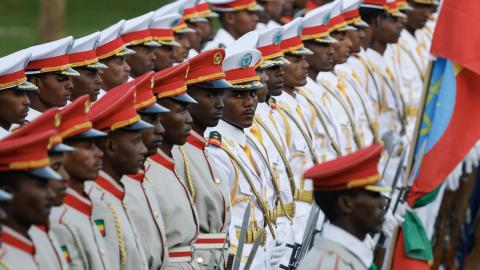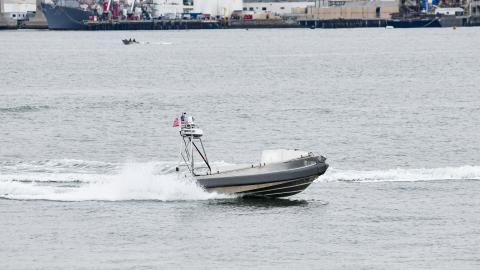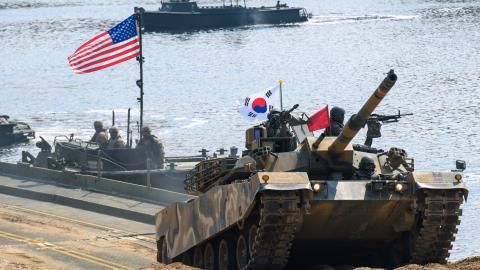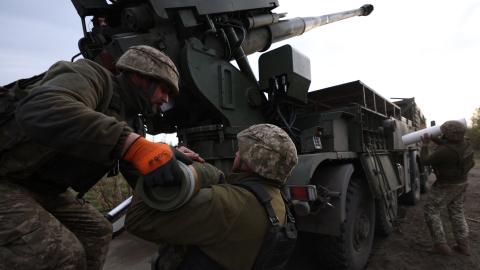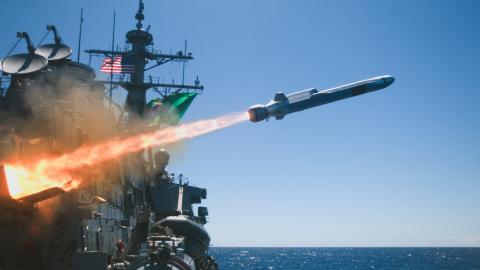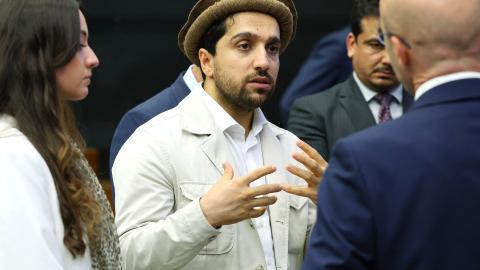In 2021 the Taliban swept back into power in Afghanistan after President Joe Biden’s disastrous withdrawal. Since then, the situation there has deteriorated considerably. The country faces an acute humanitarian crisis affecting millions and has once again become a haven for transnational terrorism.
The National Resistance Front (NRF) of Afghanistan
Since the Taliban’s return to power, only one credible and non-extremist group has been willing to take up arms in opposition: the National Resistance Front (NRF) of Afghanistan, led by Ahmad Massoud. Based in the Panjshir Province and operating in more than a dozen other provinces, the NRF has continued to fight against the Taliban against all odds and without any international support.
The NRF has two primary focuses:
Military resistance. The organization is working to expand its grassroots armed resistance nationwide, starting by holding Panjshir and conducting asymmetric attacks. In the long term, it seeks to control provinces beyond Panjshir and build a broader operational base—similar to the Northern Alliance in the 1990s. Given the group’s limited resources, persuading local power brokers to defect will be essential.
Diplomatic engagement. The NRF seeks to block international recognition of the Taliban by promoting itself as a credible alternative. A key part of this effort is the Vienna Process—a diplomatic initiative launched by the NRF to unite Afghan opposition figures and build consensus for a future political transition. The process convenes twice a year in Vienna and serves as a platform for coordination and advocacy.
How Working with the NRF Serves America’s Interests
Enhancing counterterrorism. The Taliban’s promises to block terrorist groups have failed, and al-Qaeda and the Islamic State Khorasan (IS-K) have grown stronger. Meanwhile, the threat of another major terror attack—potentially on US soil—is rising. Supporting the NRF will not solve everything, but it would give the US a local partner to help meet its counterterrorism goals.
Advancing American strategic goals. Afghanistan borders Iran, China, Pakistan, and Central Asia, making it a strategic hub. With Russia expanding its influence nearby, having a regional partner in Afghanistan would improve America’s strategic posture.
Heeding historical lessons. Afghanistan has drawn in outside powers 19 times since the early 1800s. While a US military return seems unlikely now, history shows that such assumptions can be short-lived. If future crises require reengagement, having a relationship with the NRF would give the US a trusted, strategically aligned partner and mitigate the risks associated with starting from scratch.
Addressing southern border threats. Taliban-controlled Afghanistan threatens the US homeland by empowering drug and human trafficking networks. A United Nations report found Afghan weapons en route to South American drug cartels. Rising Central Asian migration—in part from regions where IS-K and al-Qaeda recruit—further underscores the threat. The Taliban’s terrorist ties mean that instability in Afghanistan can lead directly to violence in the US.
What the Trump Administration Can Do
Not only has America failed to support the NRF in any practical way, but the Biden administration’s State Department stated that it does “not support organized violent opposition to the Taliban, and . . . would discourage other powers from doing so as well.” This is shortsighted. Instead, the US should:
Engage the NRF directly and reposition US diplomatic infrastructure. The US should establish formal contact with the NRF’s political office in Tajikistan, possibly through a Central Command liaison at the US embassy in Dushanbe. Washington should also consider moving its Afghanistan diplomatic mission from Doha, Qatar, to Dushanbe or establishing an additional presence there to reflect long-term regional interests.
Elevate the US presence at the Vienna Process. The next Vienna Process meeting should include senior US officials such as the chargé d’affaires and special representative for Afghanistan. A bipartisan congressional delegation should also attend to show political support and deepen Capitol Hill’s understanding of the Afghan opposition landscape.
Maintain non-recognition of the Taliban. The US should firmly oppose recognizing the Taliban as Afghanistan’s legitimate government and lead global efforts to this end.
Conduct a feasibility study and develop contingency plans to reestablish a US presence at Bagram Airfield. This is something President Donald Trump has suggested doing in the past. He should consider operating Bagram like al-Tanf in Syria, with a US-controlled deconfliction zone. Given Bagram’s strategic location in Eurasia, abandoning it was a major mistake.
Provide nonlethal and possibly lethal aid. The NRF needs winter gear, secure communications, and medical kits. The US should also consider covertly providing arms or funding the NRF to procure its own.
Leverage the NRF for counterterrorism. As the largest armed non-terrorist force in Afghanistan, the NRF could be a valuable partner for US counterterrorism efforts.
Explore uses for frozen Afghan assets. US policymakers should consider legally allocating a portion of the interest accrued on Afghanistan’s frozen central bank assets to the NRF’s political office to help sustain its operations.
Invite Ahmad Massoud to Washington. Massoud is an inspirational leader for millions of Afghans who may otherwise have lost hope after the Taliban’s takeover. US policymakers and the American public would benefit from hearing his message and the story of the NRF’s resistance against the Taliban.



